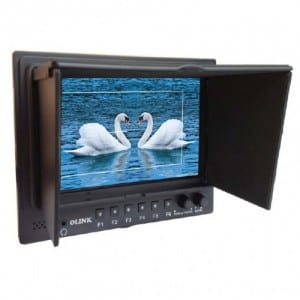– Monday 12th December
Jack Shelbourn’s Masterclass: Working with a Director of Photography/Cinematographer
This week, Jack Shelbourn conducted a masterclass which focused on how he as a Director of Photography works professionally with Sound Operators, to give us tips and advice on how to appropriately work within this relationship.
Jack opened the session by outlining his own experiences while working with a Sound Operator, Jack Fairey, who have worked together successfully numerous times. Jack highlighted the importance of the relationship between these two positions and suggested they get hired as a team on many jobs because their confidence, trust and abilities to work so well together.
Initially, Jack showed us photos from behind the scenes of a film they had recently worked on. One thing that was highlighted and made very clear to us, was that Paul was always situated immediately behind Jack, where possible. This allowed Paul to capture the sound from behind the camera – the audience’s perspective – a very important factor to consider when working both on-location and in post production. Because of this close proximity, it is important to know who you are working with confidently, and have the ability to communicate about framing, position, lights, etc.
This led on to a short conversation about lenses. Jack portrayed the importance of knowing the lingo on set, which always work to flower quicker, as setup can be completed more efficiently. For example, understanding that the smaller the lens number (say 18mm) means the wider the shot. From this information, the Sound Operator can decide the optimal position to boom from and know how close they can get to the actor, instead of waiting for the shot to be set up and having a look on the monitors, then setup afterwards.
After this, Jack explained some techniques Paul uses on set in order to improve his work. The first of these is creating an individual dialogue booth at the location. Paul always carries duvets, which he erects into a makeshift dialogue booth and gets the actors to run through every line in the film. This allows him to have backups of the dialogue incase the dialogue captured during the shoot is unusable for whatever reason. Also, because this is on set and not in a studio, it has similar background noise without be studio-quality clean, which saves time later in the mix. Additionally, Paul make sure he does this at a time which is convenient and efficient for all involved – whether this time is before the shoot while the camera and lighting equipment is being setup, or afterwards when equipment is being packed down. Another technique he used was planting radio mics inside a car as plant mics. This meant Paul did not need to boom but just monitor once the mics had been taped securely, and hidden from shot.
Subsequently, Jack setup a Panasonic 4K and allowed us a closer look, as he thought we probably haven’t had a chance on set and we aren’t allowed to book them out. One thing of interest for us is that on the monitor, you can set two white horizontal lines at the top and bottom of the screen, any space above the top line or below the bottom line will not be shot, even though it is on the monitor. This allows the DoP time to react to a lowering boom, or any boom shadows. Or if there is a larger monitor on set, allows the Sound Operator to see whether the boom will be in shot.

Penultimately, Jack constructed us a 3-point lighting rig, which includes a key light, backlight and fill light, which is commonly used for documentary interviews. He suggested ways in which to get around boom shadows, such as using flags or scooping the boom.
Finally, Jack showed us a new type of single-handed steady cam that can be linked to a mobile phone via an app. It was very small and lightweight and held in one hand, and double tapping a trigger will make the lens stabilize. It looked like a very cool gadget, and surely an important piece of technology to get used to in the future. Jack rhetorically asked us how we would deal with equipment like this in the future with regards to booming and shadows etc.
Overall, this was an excellent session from Jack, who was very informative and helpful, answering all the questions we asked. The techniques he taught us will be great to try out and use in the future when on location. This session really highlighted the importance of professionalism, efficiency and communication when on set, and suggested how it would be helpful going forward to learn other media terms and equipment, such as lenses.
Published by